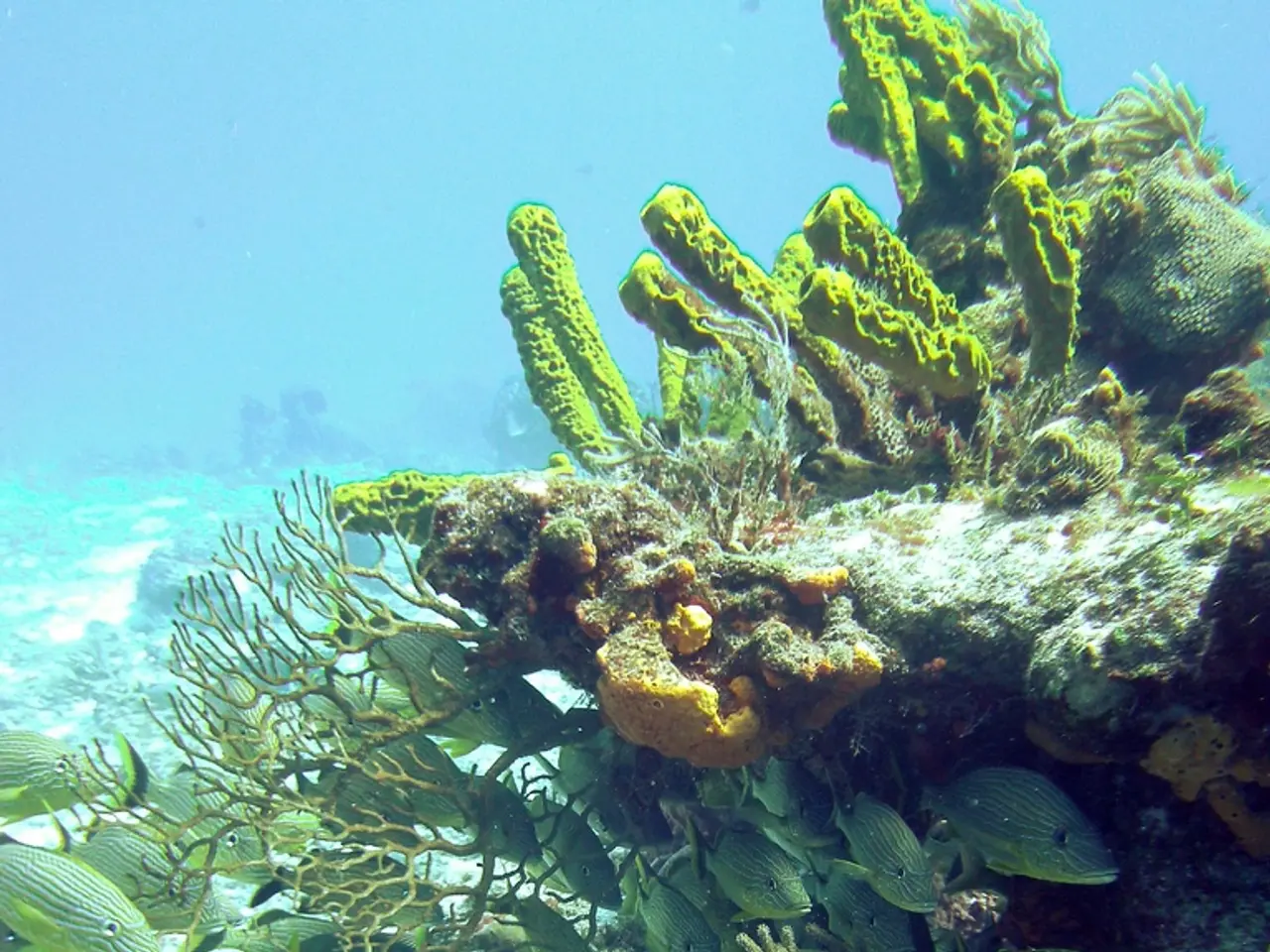Rapid Greenland Ice Melt Spurred by Unseen Electromagnetic Forces
Unseen Threat: Underwater Waves Amplifying Greenland's Ice Loss and Sea Level Rise
A groundbreaking study, recently published in Nature, has shed new light on the impact of iceberg calving on the Greenland ice sheet and global sea levels. The research, conducted by a team from ETH Zurich and the University of Washington, has revealed that underwater waves generated by iceberg calving are a significant contributor to Greenland's ice loss and sea level rise.
If all of Greenland's ice sheet were to melt, sea levels would rise by about 7 meters. Every year, Greenland loses approximately 270 gigatons of ice, enough to raise global sea levels by 0.8 millimeters annually. However, the real threat to the planet is not what we see calving from the glacier, but what's happening silently beneath the water.
When large chunks of ice break off glaciers and crash into the ocean, they generate strong surface waves, often described as calving-induced tsunamis, as well as internal gravity waves beneath the water surface. These waves disrupt the water layers in the fjords, stirring up warmer subsurface seawater and bringing it into contact with the glacier fronts. This mixing enhances underwater melting at the glacier base, which weakens and erodes the ice face, thereby accelerating glacier calving and overall mass loss from the Greenland ice sheet.
This process can be compared to stirring ice cubes in a drink: without stirring, a cool insulating layer slows melting, but waves from calving continually "stir" the surrounding water, breaking down this insulating layer and speeding melt rates. This increased submarine melting driven by wave-induced mixing is a key mechanism leading to glacier retreat and contributes to sea level rise as more ice transitions from the ice sheet into the ocean.
Observationally, these underwater waves and their effects have been documented using advanced seafloor fiber-optic sensing technologies. The GreenFjord project, involving ETH Zurich and the University of Washington, implemented fiber-optic cables laid on the seafloor near glacier fronts in southern Greenland. These sensors allowed continuous, high-resolution detection of the different waves caused by calving events, including transient surface tsunamis, internal gravity waves, and associated currents. This technological breakthrough enabled researchers to measure how the physical impact of falling ice and the subsequent wave-driven water mixing accelerates submarine melting and glacier retreat in unprecedented detail.
Prior to this, measurements relied on ocean bottom sensors and vertical temperature profiles, which provided only limited snapshots. Fiber-optic submarine sensing provides spatially and temporally rich data that improve understanding of calving dynamics and their impact on the ice-ocean interface. These insights also help refine glacier melt and calving models and could inform early warning systems for calving-related hazards like tsunamis.
An analysis of satellite data from 1985 to 2022 revealed that calving has caused a 20% greater loss of glacier mass than previously thought. Of the 207 glaciers evaluated, 179 show significant retreats. The massive influx of fresh water into the North Atlantic could weaken the Gulf Stream, bringing devastating climate effects to Europe.
The Eqalorutsit Kangilliit Sermiat glacier releases 3.6 cubic kilometers of ice per year, almost triple that of the Rhône Glacier in Switzerland. The underwater waves, generated by iceberg calving, are capable of altering the thermal structure of fjords for hours.
The warning is that the ice doesn't wait, and the waves we don't see are the ones that sweep us away the fastest. Undersea fiber optic cable is an essential tool for early monitoring of the processes that are eroding the base of glaciers. Fiber optic technology opens a new frontier where every cubic centimeter of moving water matters for protecting the planet's future climate. More than 1,000 gigatons of ice were not accounted for in previous calculations.
Counting icebergs is no longer enough; we must observe the ocean in all its depth and complexity. Every millimeter of sea level rise due to Greenland's melt counts in the battle against climate change. The phenomenon of underwater waves caused by iceberg calving has not yet been included in current sea level prediction models. The discovery forces us to rethink our understanding of polar ice melt and its impact on the world.
References:
- 10.1038/s41586-022-05201-x
- 10.1038/s41586-022-05197-3
- 10.1038/s41586-022-05198-1
- 10.1038/s41586-022-05200-z
- 10.1038/s41586-022-05199-0
- The study in Nature reveals that underwater waves generated by iceberg calving are a significant factor in the global health-and-wellness issue of climate change, contributing to sea level rise, a potential threat to coastal regions worldwide.
- In the field of environmental-science, the GreenFjord project, using advanced fiber-optic technologies, has provided unprecedented detail about the impact of underwater waves on glacier retreat and submarine melting, which could aid in predicting future climate-change scenarios.
- The sample analysis of satellite data spanning 1985-2022 suggests that underestimations in our understanding of ice loss and its impact on sea levels have been prevalent, emphasizing the importance of incorporating medical-conditions like underwater waves caused by iceberg calving into sea level prediction models in the domain of science.




